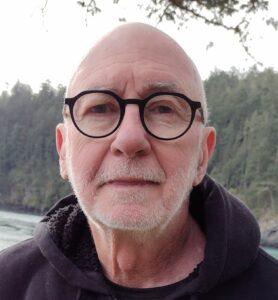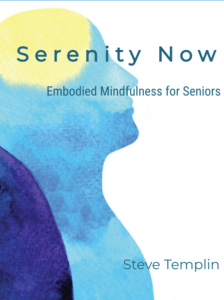I love dogs in part because I find it hard to judge them. Something in me knows they are who they are and that makes them better than okay in my book. I only wish I had more of that same accepting attitude towards humans in general and myself in particular.
I’m going to share some relatively new neuroscience, Polyvagal Theory, that has helped me to better understand, forgive, and love myself and others as well. It’s not only a neurological road map for understanding what causes specific emotional states and behaviors but also for helping to resolve them.
We’ve learned that the nervous system, specifically the autonomic nervous system (ANS) controls our heartbeat, blood pressure, digestive functions and overall health and well-being without our conscious participation. But it also controls emotional states and behavioral responses as well. It helps us to maintain the status quo, even if it’s less than desirable, and to make meaningful and lasting change really challenging.
Whether it’s fainting at the sight of blood, PTSD symptoms, getting emotionally triggered by your spouse or boss, high blood pressure, anxiety, or depression …. and just about any other physical or emotional symptom you can think of …. it’s your ANS that’s really responsible and not you.
From this Polyvagal perspective we can identify aspects of ourselves that we’d like to change or improve and work on reprogramming our ANS to create authentic and lasting change. As we change our neurological state our perception and the stories we tell ourselves change as well.
A Pinch of Polyvagal Theory Helps
We’re wired to protect ourselves. It’s automatic, unconscious, and for the most part beyond our control.
When we perceive danger …. tigers …. or relatives at Thanksgiving …. the ANS activates programmed responses, often learned very early, to protect us from being devoured by fangs or by threatening feelings.
The insight from Polyvagal Theory, developed by Stephen Porges, Ph.D., is that we protect ourselves by mobilizing energy to run or fight, and if that’s not possible we immobilize by withdrawing energy and surrendering, collapsing, going numb, dissociating …. we just find a way to go away so we feel less emotional pain. And both of these strategies are automatic and unconscious …. until we learn how to regulate our ANS.
Many of our less than desirable emotional and behavioral states are reflections of these unconscious, protective neurological strategies.
Another insight from Polyvagal Theory is that there is a higher order of threat resolution, beyond mobilizing and immobilizing, which is engaging. When it is safe to engage with others, or with our very own inner experience, kindly and patiently, our ANS is transformed and so are we.
The safety of caring engagement activates the vagus nerve (the source of vagal in Polyvagal) that’s ultimately in charge of thriving, physically and emotionally, rather than surviving, protecting or defending.
We can learn to safely engage with ourselves to self-regulate or with others to co-regulate, to support mind and body healing that is otherwise impossible. The neurological insight here is that we can’t be in a defensive or protective nervous system state and really thrive. Neurologically we can’t thrive and survive at the same time.
When we learn to activate the vagus nerve consciously, through caring and kind connection with ourselves or others, we enlist healing resources that in other neurological states aren’t available or are off-line. When consciously and kindly engaged our mindset improves, our biology improves, and our connection with spiritual resources is restored.
The big take away from Polyvagal Theory is that we have a new road map for healing ourselves. Clinically this insight is being used to address a wide swath of physical, emotional, and behavioral conditions.
Less Self-Judgment …. More Self-Regulation
While we’re not responsible for the automatic actions of our nervous system we can learn to be responsible for updating the ANS programming that is running our lives.
When we catch ourselves in autonomic states of protection or defense that are no longer serving us appropriately, we can learn to shift our neurological state, and with it our emotional and physical states as well.
The first step is awareness. We have to know when we’re out of balance so that we can intentionally chose to re-balance ourselves. Just consciously acknowledging that we’re out of whack may not feel good …. but it does activate neurological mechanisms that are designed to balance us. Simply becoming conscious while not judging can improve heart rate variability assessments (a measurement of ANS balance).
The next essential step is to find an experience of safety. Safety is the antidote to threat or danger. When I can feel care for someone or something I love I’m activating my vagus nerve that over time will dampen the protective response.
When I’m in nature or thinking about and feeling how nature touches me that is also a balancing cue of safety. Listening to music that touches your heart does the same thing. You can just get imaginative and see what works best for you. And then keep reinforcing the process of consciously feeling safe.
These safe and heartwarming experiences are balancing your ANS over time. The effect is cumulative. These experiences are reprogramming how you perceive and experience your life. The more you practice the more energy you have in the pre-frontal cortex where we tend to see the glass as half full rather than the limbic brains perspective that the glass is half empty.
Since the ANS controls your body, mind, and even spiritual experience learning to take responsibility for balancing it can be a life changer. While you can’t control life’s events you do have an amazing capacity for controlling how your nervous system responds to life.
A Simple Self-Regulation Practice
We’ll end with a simple self-regulation exercise that’s so simple and yet so powerful neurologically that it may be difficult to appreciate. Just remember that you are wired to heal.
The key is to shift into the healing and thriving neurological state. The challenge is that we’ve learned to survive in a survival state, and not a thriving state. So the healing state may feel unfamiliar, odd, or even boring if it’s at odds with the status quo. If that’s the case some more insight is needed so that the practice will be rewarding. Until then don’t push yourself if you’re feeling uncomfortable. On the other hand If this exercise feels good, then congratulations.
Notice how you feel …. physically and emotionally. Notice how busy, or not, your head is thinking thoughts about how you are or how you should be. Notice your thoughts. Then, gently shift your attention to really feeling into your body. Notice tension or emotional stirrings, or numbness …. simply notice.
When you simply feel into the felt truth of the moment without any attempt to fix, analyze, or understand …. while you’re simply being vulnerable in the moment …. you’re activating your vagus nerve, synchronizing brain wave across your cerebral cortex, and balancing hormones and neurotransmitters and all of the healing benefit those changes confer.
Then let’s add an element of emotional safety and neurological power to the process. Bring to mind someone or something that you really care about or love. And then feel that care, breathe that care into your own heart. If you breathe slowly …. about 4-5 seconds in and 4-5 seconds out …. you’ll boost the activation of your vagus nerve and your potential for healing.
The benefits of self-regulation practices are cumulative …. so practice, practice, practice.


 Steve is a retired Doctor of Oriental Medicine, Acupuncture Physician, and HeartMath Trauma-Sensitive Certified Practitioner with over 35 years of clinical experience in the fields of Energy Medicine, Energy Psychology, and Biofeedback.
Steve is a retired Doctor of Oriental Medicine, Acupuncture Physician, and HeartMath Trauma-Sensitive Certified Practitioner with over 35 years of clinical experience in the fields of Energy Medicine, Energy Psychology, and Biofeedback. 